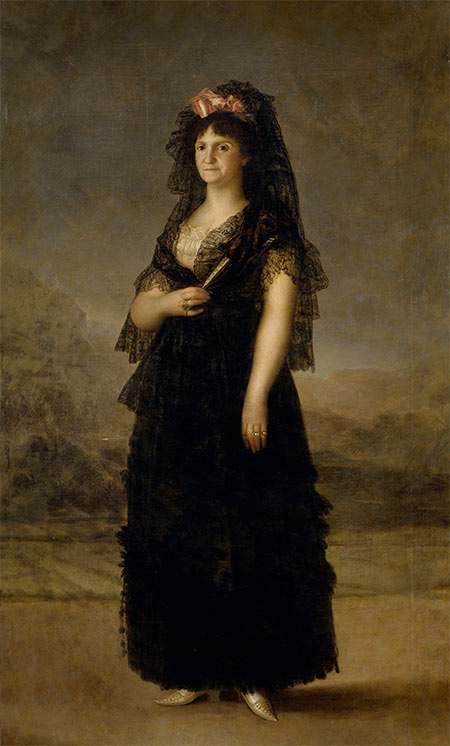Goya: The Portraits
The Spanish painter's works give intimate insight into his subjects’ psychology and incisive social commentary on a dramatic period of Spanish history.

Today, Francisco de Goya Lucientes (1746-1828) is best remembered for producing dark, nightmarish works. His Black Paintings, murals on the walls of his house, painted late in his life, have become synonymous with his name. But in his own time he was a celebrated portraitist. His portraits provide a commentary on a society that was undergoing dramatic changes, and in his time as a portraitist Goya managed to capture the protagonists of these changes: the Ancien Régime in Spain, enlightenment intellectuals, French invaders, Wellington on his arrival in Madrid, Ferdinand VII following his restoration to the throne and, in his years in exile, Goya’s friends, family and the intellectuals he found in Bordeaux.
In his portraits, Goya aims – and succeeds with remarkable effect – in finding the real person behind the position, exposing their personalities and inner psyches to the world. He offsets the accepted portrait tradition with informality and humanity. He is unafraid of showing his subjects as they are and as he sees them. Queen María Luisa of Spain, a famed beauty in her youth, suffered from a hard life with more than 20 pregnancies and the loss of her teeth. Where other artists tried to disguise this by hiding her features behind classical ideals, Goya – with the exception of filling out her sunken, toothless cheeks – painted her truly, but kindly, emphasising the long arms of which she was so proud. The result is sympathetic and fair. María Luisa must have been happy with the results as she sat for Goya many times.
Where Goya was less keen on his subject, he continued to use this unstinting devotion to veracity as his weapon. As the curator, Xavier Bray, demonstrated, Goya’s state portraiture ticked all the boxes: clothing, medals, sashes and symbols of state and power are present and gloriously painted but, under his uncompromising hand, his opinions of his subjects subvert the pomp. Ferdinand VII, unpopular then as he is now, is inelegant, with disproportionately large and clumsy hands; the pose suggests a lack of appreciation for the king.
Alongside this grand portraiture, his dearest friends are portrayed with tenderness and love, but still with the veracity of his grander portraits: his friends’ flaws are loved as much as they are and are not disguised. Martín Zapater, who Goya called his ‘soulmate’, has a nose which seems to pierce through the canvas.
This new exhibition at the National Gallery in London is arranged both chronologically and thematically, reflecting the stages of his career. At each stage a self portrait is included, showing how his perception of himself, and how he chose to market himself, developed – and he did market himself: early portraits showed his calling card, painted prominently into the foreground as he strove towards his goal of becoming portraitist of the aristocracy.
This, the first major Goya exhibition in London since 1991, is a great achievement, bringing together works from across the world, many which have never been loaned out before or even on display before, and some which are still held by the families of those who commissioned and sat for them.
As the first rooms show, Goya’s early ability was perhaps not a match for his ambition, but that soon changed. What is presented here is a collection of astounding portraiture that gives insight, not just into the mind and talent of a great artist, but into the personalities, egos and pretentions – the real people – at the centre of a pivotal era in Spain’s history.
Goya: The Portraits is at The National Gallery, London from October 7th to January 10th, 2016.





